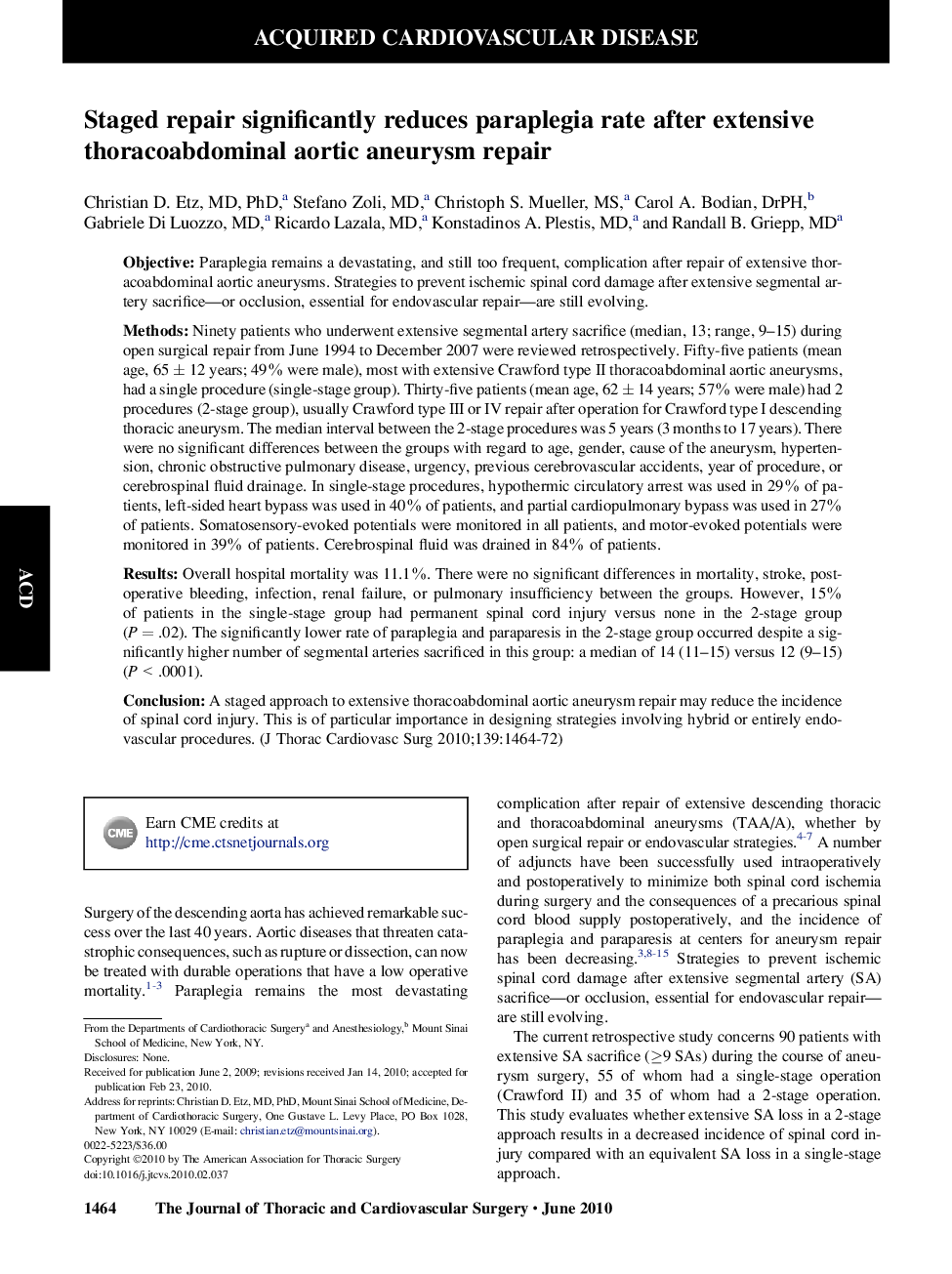| کد مقاله | کد نشریه | سال انتشار | مقاله انگلیسی | نسخه تمام متن |
|---|---|---|---|---|
| 2984086 | 1578661 | 2010 | 9 صفحه PDF | دانلود رایگان |

ObjectiveParaplegia remains a devastating, and still too frequent, complication after repair of extensive thoracoabdominal aortic aneurysms. Strategies to prevent ischemic spinal cord damage after extensive segmental artery sacrifice—or occlusion, essential for endovascular repair—are still evolving.MethodsNinety patients who underwent extensive segmental artery sacrifice (median, 13; range, 9–15) during open surgical repair from June 1994 to December 2007 were reviewed retrospectively. Fifty-five patients (mean age, 65 ± 12 years; 49% were male), most with extensive Crawford type II thoracoabdominal aortic aneurysms, had a single procedure (single-stage group). Thirty-five patients (mean age, 62 ± 14 years; 57% were male) had 2 procedures (2-stage group), usually Crawford type III or IV repair after operation for Crawford type I descending thoracic aneurysm. The median interval between the 2-stage procedures was 5 years (3 months to 17 years). There were no significant differences between the groups with regard to age, gender, cause of the aneurysm, hypertension, chronic obstructive pulmonary disease, urgency, previous cerebrovascular accidents, year of procedure, or cerebrospinal fluid drainage. In single-stage procedures, hypothermic circulatory arrest was used in 29% of patients, left-sided heart bypass was used in 40% of patients, and partial cardiopulmonary bypass was used in 27% of patients. Somatosensory-evoked potentials were monitored in all patients, and motor-evoked potentials were monitored in 39% of patients. Cerebrospinal fluid was drained in 84% of patients.ResultsOverall hospital mortality was 11.1%. There were no significant differences in mortality, stroke, postoperative bleeding, infection, renal failure, or pulmonary insufficiency between the groups. However, 15% of patients in the single-stage group had permanent spinal cord injury versus none in the 2-stage group (P = .02). The significantly lower rate of paraplegia and paraparesis in the 2-stage group occurred despite a significantly higher number of segmental arteries sacrificed in this group: a median of 14 (11–15) versus 12 (9–15) (P < .0001).ConclusionA staged approach to extensive thoracoabdominal aortic aneurysm repair may reduce the incidence of spinal cord injury. This is of particular importance in designing strategies involving hybrid or entirely endovascular procedures.
Journal: The Journal of Thoracic and Cardiovascular Surgery - Volume 139, Issue 6, June 2010, Pages 1464–1472